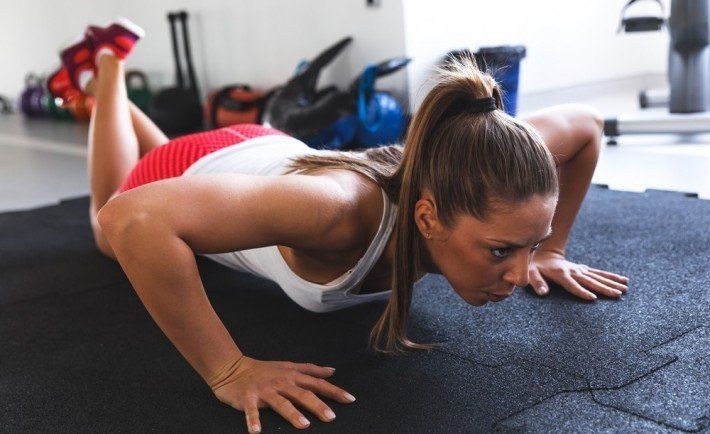Welcome to the world of warm-up exercises, where you’ll uncover the 10 benefits of warm-up that can transform your training experience. Warm-up is a crucial phase that prepares your body both psychologically and physically for the main training ahead. From increased blood flow to improved muscle elasticity, let’s explore how warm-up can elevate your performance.
Warm-up is about a sequence of exercise drills to prepare the athlete both psychologically and physically. It precedes the main training which is a more intense and demanding procedure.
The 10 Benefits of Warm-Up Exercises
Warm-up exercises are essential for both professional athletes and fitness enthusiasts. Below are the 10 benefits of warm-up that make it an indispensable part of any workout routine:
- Increased Blood Flow and Metabolism
Boosts oxygen delivery to muscles, improving performance. - Elevated Body Temperature
Warms up muscles for better flexibility and mobility. - Improved Oxygen Intake
Gradual increase in heart rate enhances oxygen supply. - Optimized Performance
Prepares your body to perform at its peak capacity. - Enhanced Muscle Elasticity
Reduces resistance in connective tissues, minimizing the risk of injuries. - Faster Nerve Impulse Transmission
Enhances neuromuscular coordination for smoother movements. - Reduced Muscle Tension
Relaxes muscles, promoting better efficiency and comfort during exercise. - Heightened Exercise Readiness
Boosts psychological and physical preparedness for training. - Adaptation to Weather Conditions
Helps your body adjust to extreme temperatures, whether hot or cold. - Injury Prevention
Gradually increases intensity, protecting joints and muscles from strain.
Importance of Duration and Intensity
Moreover, the chances of an injury are reduced considerably and muscle efficiency is enhanced since faster and more intense muscle contraction is achieved. Aerobic capacity is boosted, muscle coordination is improved, the body adapts to weather conditions and there is a positive attitude towards exercising.
It has been observed that through warming up our body temperature is likely to increase up to 2C degrees. For this reason, it is necessary that warm-up should not exhaust the athlete. The body temperature must not fall, a fact which occurs very often when we take a break for water or static stretching.
General Warm-Up vs. Special Warm-Up
General Warm-Up involves engaging major muscle groups to increase blood flow and raise body temperature.
Special Warm-Up, on the other hand, focuses on preparing specific muscles and movements tailored to your main activity.
Factors Influencing the Duration of Warm-Up
The Role of Stretching in Warm-Up
Stretching is a crucial component of any warm-up routine. Incorporating dynamic stretching during warm-ups can enhance flexibility and reduce muscle stiffness, preparing your body for movement. Conversely, static stretching is best reserved for post-workout cooldowns, where it aids in improving flexibility and preventing muscle tightness.
Appropriate Types and Timing of Stretching
Dynamic stretches during warm-up engage and prepare muscles for the activities ahead, making them essential for maximizing performance. Static stretches, however, should be saved for after your workout, as they are more effective in improving flexibility and relaxing the muscles. Want to explore more stretching techniques? Check out our article: Types of Stretching: A Guide to Stretching Techniques.
The Impact of Incorrect Stretching on Performance
Performing stretches incorrectly or at the wrong time can negatively impact your performance. Improper stretching can reduce muscle efficiency, leading to suboptimal results during your training session.
The Risks of Stretching Without Warm-Up
Stretching without warming up first can increase the risk of injuries. Cold muscles and joints are less flexible and more prone to strains and sprains. To avoid this, always prioritize warm-up exercises before any stretching routine.
Additional Techniques: Massage and Stimulation
Warm-Up for Everyone
Warm-up exercises aren’t just for professional athletes; they are essential for individuals of all ages, body types, and fitness levels. Regardless of your experience, incorporating a warm-up routine into your regimen helps prepare your body for physical activity, enhances performance, and reduces the risk of injuries. From beginners to seasoned athletes, everyone can reap the rewards of a proper warm-up.
Looking for comfortable and stylish attire for your warm-up or cooldown? Check out our exclusive range of hoodies and T-shirts with stunning pole dancing and aerial arts designs on our Etsy shop. They’re perfect for staying comfortable and motivated before or after your workout.
The Benefits Beyond Professional Athletes
Warm-up exercises extend far beyond the needs of professional athletes. They provide valuable advantages for anyone participating in physical activity, from recreational enthusiasts to individuals striving to stay active. By enhancing overall training experiences and delivering better results, warm-ups prove to be an indispensable part of fitness routines for everyone.
Conclusion: Why Warm-Up Matters
Warm-up exercises offer a multitude of benefits that extend beyond just physical preparation. By incorporating them into your training routine, you can experience increased performance, reduced risk of injuries, enhanced muscle efficiency, and improved overall well-being. Whether you’re a professional athlete, a recreational enthusiast, or simply someone passionate about staying active, warm-up exercises are essential for optimizing your body’s capabilities and achieving your fitness goals. So, make warm-up an integral part of your training regimen and witness the remarkable difference it can make in your journey towards a healthier and more fulfilling lifestyle.







